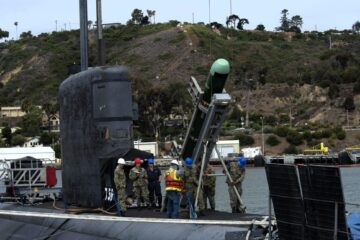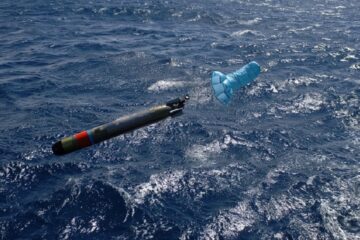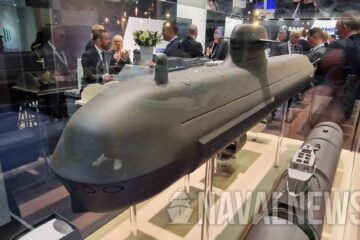The tests are the first of its kind for the new torpedo and were undertaken during February and March 2020 at sea ranges outside Karlskrona, on Sweden’s east coast in the Baltic Sea. The tests were conducted from a Gotland-class submarine and from a Visby-class corvette. The purpose of the firings was to verify that the torpedo can be safely launched from the vessels, which also included verification of the integration on the vessels as well as SLWT’s target seeker.
“The Saab Lightweight Torpedo will provide the Swedish and Finnish Navy with the ability to deter and if necessary destroy hostile underwater and surface threats. Having completed these tests successfully is a major milestone in this joint project,”
Görgen Johansson, Head of Saab’s business area Dynamics

The development of the torpedo commenced with an order from the Swedish Defence Materiel Administration (FMV) in 2016. In January 2018, the Finnish Navy placed an order for the SLWT, as a part of the Squadron 2000 Mid-Life Upgrade Programme. The Finnish Navy will operate the system on-board the upgraded Hamina-class vessels as well as the new Pohjanmaa-class corvettes of the Squadron 2020 Programme. The first firing of the prototype torpedo took place the same year. The Torped 47 (its official name in the Swedish Navy) will be operational in late 2022 aboard the visby-class only shortly followed by the initial operational capability (IOC) aboard the Gotland-class submarine.
The SLWT is unique in the way that it is adapted for difficult littoral underwater conditions such as those found in the Baltic Sea while also being designed for operations in deeper seas. With its state-of-the-art design, it incorporates a fully digital homing system, which offers both fire-and-forget and wire-guided operation to pursue the target. It is a flexible system that can be launched from multiple platforms, including surface ships, helicopters, fixed-wing aircraft and submarines.

“This is the fifth generation of torpedo we developed for the swedish navy. It is designed to perate in the challenging envirnment of the baltic sea”
Anne-Marie Vösu, Vice President and head of Business Unit Underwater Systems, Saab
The new torpedo bring a wider speed range (lower low speed, higher high speed) and better range and better maneuvrability compared to Torpedo 45
Lieutenant Commander (LtCdr) Anders Hecker, Commanding Officer of HSwMS Helsingborg
This new torpedo on the modified Gotland class submarines, the new coming Blekinge class submarines and the Visby class Corvettes will mean a tremendous amount for the ASW ability in the Swedish defense for many years to come.
Rear Adm. Odd Werin, Head of Naval Equipment at FMV
About Torpedo 47 / Saab Lightweight Torpedo / SLWT

The SLWT differs from existing ASW systems by its capability to adapt to difficult hydro-acoustic conditions, thanks to its suitable frequency range, advanced signal processing, fully digital sonar, as well as an evolutionary HF range. Sailors will also be able to control the weapon during the engagement, due to availability of galvanic wire and evolutionary optical fiber link.
Moreover, the SLWT sensor system, that will localize and identify submarines, is tailor made for the environment in the Baltic Sea. Depending on the local environment the torpedo must have the ability to alter speed, navigate with high accuracy and communicate efficiently with the firing platform. The future torpedo will have a weight of approx. 340 kg, a range of 20 km and an endurance of around 1h. Pumpjet propulsion will be provided by LiFePO4 battery
The future SLWT is being developed as a « modular » weapon, which means that the user only has one module to change between the warhead and exercise version, otherwise it is the same torpedo. After the exercise shot, the exercise module inflates its balloon so that you can recover the torpedo from the surface.
The modularity also brings future proofing: Saab will bring an “anti torpedo torpedo” capability as a future feature to the SLWT.





